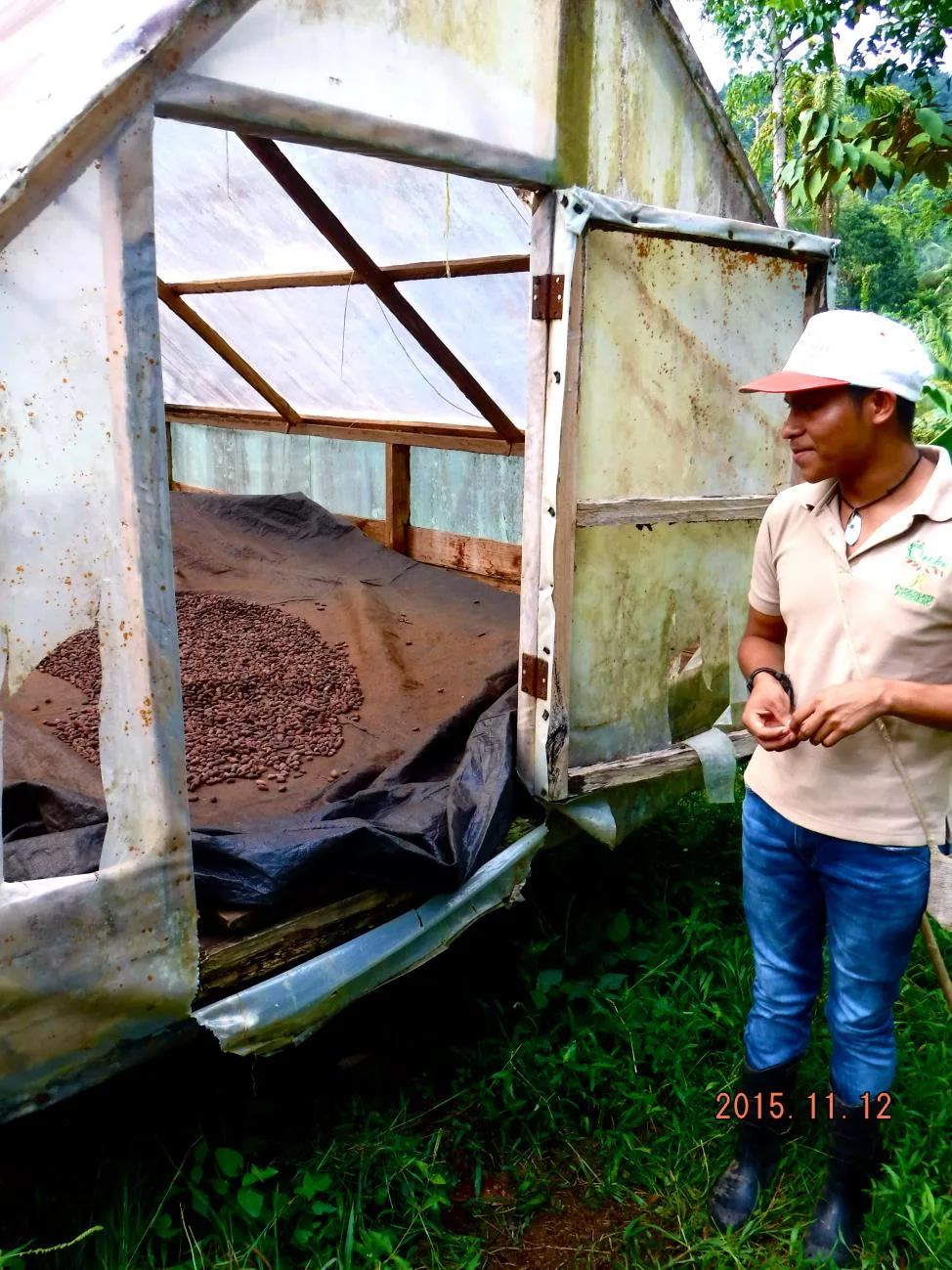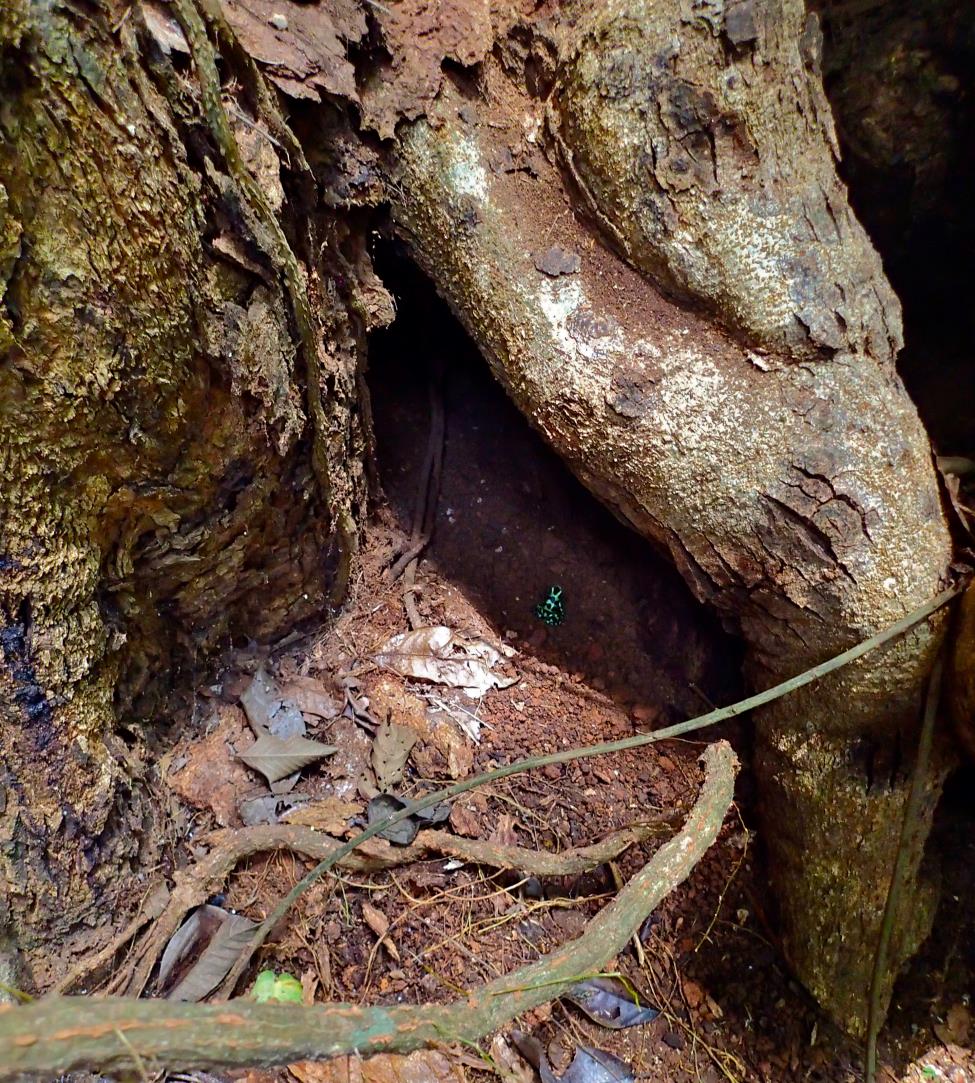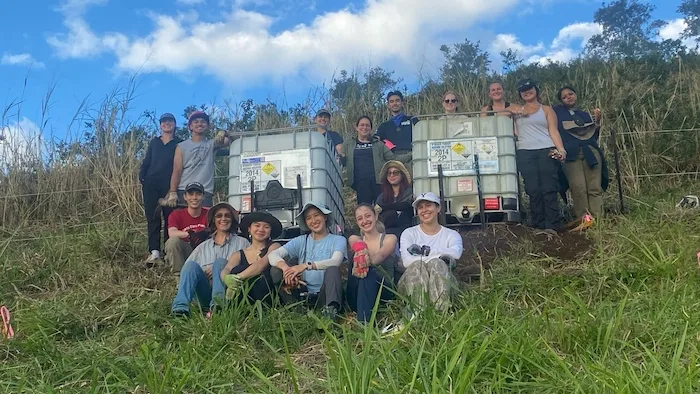Agroforestry and Cacao
I don’t remember the first time I saw a chocolate bar, but I vividly remember the first time I saw a cacao flower. “Is that a fungus?” I asked Orlando, our guide for the day at his Finca La Magnita. He smiled as I kept looking at the branch and realized it was a closed flower. He was shocked I had never seen a cacao tree before.
All of a sudden, six weeks later, we went on our last excursion as a whole group. We toured Oreba’s agroforest and community, learning about the chocolate making process. We have now eaten cacao in every possible stage: juicy, sweet/tart arils fresh off the branch; sun-dried nibs; roasted nibs; ground chocolate; 90% chocolate; and the pure cacao-based brownies we have for snack weekly. It is delicious each and every way.
As we transition into our Directed Research projects, I am thinking a lot about agroforestry—I’ll be working with our professor in Resource Management and Terrestrial Ecology to study the relationships between managed shade-grown cacao forests and other unmanaged forest areas, looking at the relationship between forest complexity and cacao yield. Agroforestry has its problems; the gap between what farmers are paid and what chocolate is sold for is large, and growing cacao organically makes it difficult to respond to the fungal disease currently plaguing the plants.
Yet the idea of working with the natural world by, for example, utilizing existing canopy trees for shade and growing a diversity of species to naturally improve the soil and manage pests, seems like such an obvious way to produce our food. Agroforestry is beautiful, too. Structural diversity from various trees leads to a diversity of other organisms from fungi to frogs. Enormous buttresses house spiders weaving intricate webs and monkeys howl at night, high in the canopy.
I am beyond excited to return to four of the agroforest areas and visit two new ones, and spend my last weeks in Panama amidst these complex ecosystems.

Our Tour Guide and Community Member from the Oreba Cacao Farm shows us a drying hut where beans are prepared for market.

Cacao flowers on one of hundreds of trees in this organic plantation.

A green and black poison dart frog seeks shelter in the trunk of a large tree that provides partial shade for the cacao forest.

Dried cacao beans are roasted to prepare a pure cacao bar in the traditional way.
Photos: Mike Halamek
→ Tropical Island Biodiversity Studies Semester Program in Panama
Related Posts

Restoration on a Cinder Cone: A Syntropic Story

